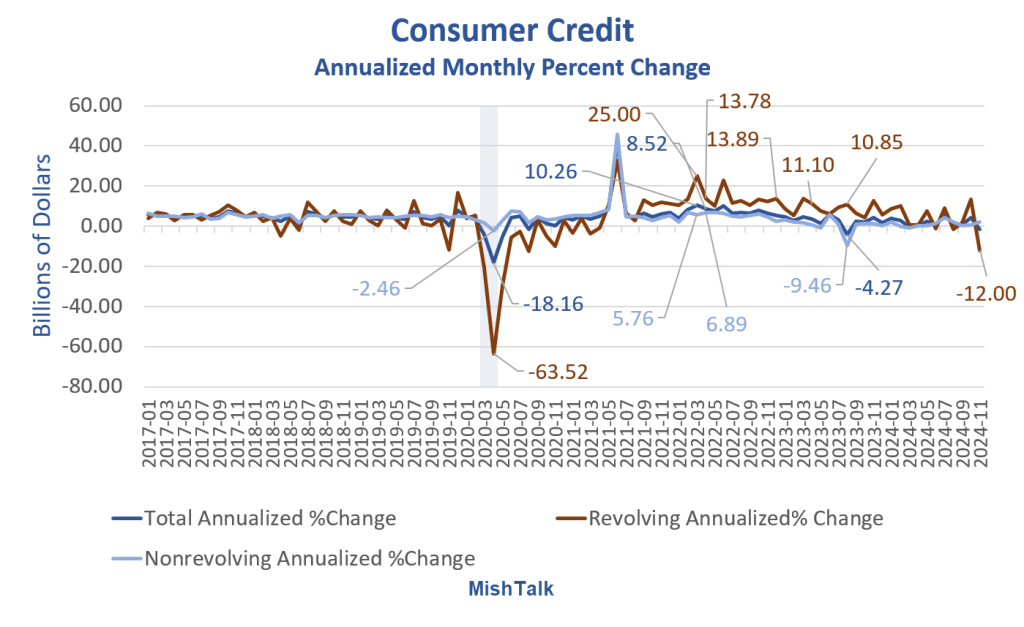Consumer credit unexpectedly declined. But what do we make of it?

Unexpected Decline
Investing reports Consumer credit sees unexpected decline, impacting USD
The latest economic data revealed a significant drop in Consumer Credit, a key indicator of consumer spending and confidence. The actual figure came in at a surprising -7.49B, a stark contrast to the forecasted 10.30B.
This unexpected decrease in Consumer Credit, which measures the change in the total value of outstanding consumer credit requiring installment payments, has caught analysts off guard. The forecasted figure suggested a steady increase, in line with the previous figure of 17.32B. Instead, the sharp decline has raised concerns about consumer spending and the overall health of the economy.
The lower than expected reading is being viewed as negative, or bearish, for the US Dollar (USD). This is due to the close correlation between Consumer Credit and consumer spending and confidence. A rise in Consumer Credit often signals increased consumer spending, which can strengthen the USD. However, a decline, such as this one, can have the opposite effect, potentially weakening the USD.
Revolving Credit Drops 12% in November
PYMNTS reports Revolving Credit Drops 12% in November as Consumers Trim Balances
November’s stats from the Federal Reserve on consumer credit — known as the G.19 report — show a reversal from recent months, where households kept borrowing, padding balances, and using cards and other loans to finance daily life.
The question is: Was the decline in revolving credit (such as credit cards) and nonrevolving lines (fixed-term loans like auto loans), heading into the holiday season, a sign of things to come, when consumers will trim balances?
PYMNTS Intelligence has reported through the past few months a bit of a shift: Consumers have been moving toward installment options, which include card-linked installments and buy now, pay later plans. And elsewhere, in a recent “Paycheck-to-Paycheck” report, as of last fall, 75% of consumers carried at least some card debt.
Twelve Percent Annualized Decline

The drop looks enormous, but let’s put this in perspective.
Revolving Consumer Credit in Billions of Dollars

Much of the rise in consumer credit is a mirage of inflation. On a “real” inflation-adjusted basis, revolving credit is about where it was in 2008-2009.
From a mile-high view it looks as if nothing much is happening.
We get yet another perspective if we hone in on details.
Revolving Consumer Credit in Billions of Dollars Detail

Depending on what slant you wish to take, you can easily make the changes look enormous, trivial, or anywhere in between.
The above view shows shows no change in real revolving credit for 10 months starting February of 2024.
Since it is real spending that drives GDP, the above chart provides the best view. If the decline persists, the chart is recession looking.
Two Recession Indicators, What Do They Say Now?
On December 20, discussed Two Recession Indicators, What Do They Say Now?
I will update that series after the Jobs report on Friday.
